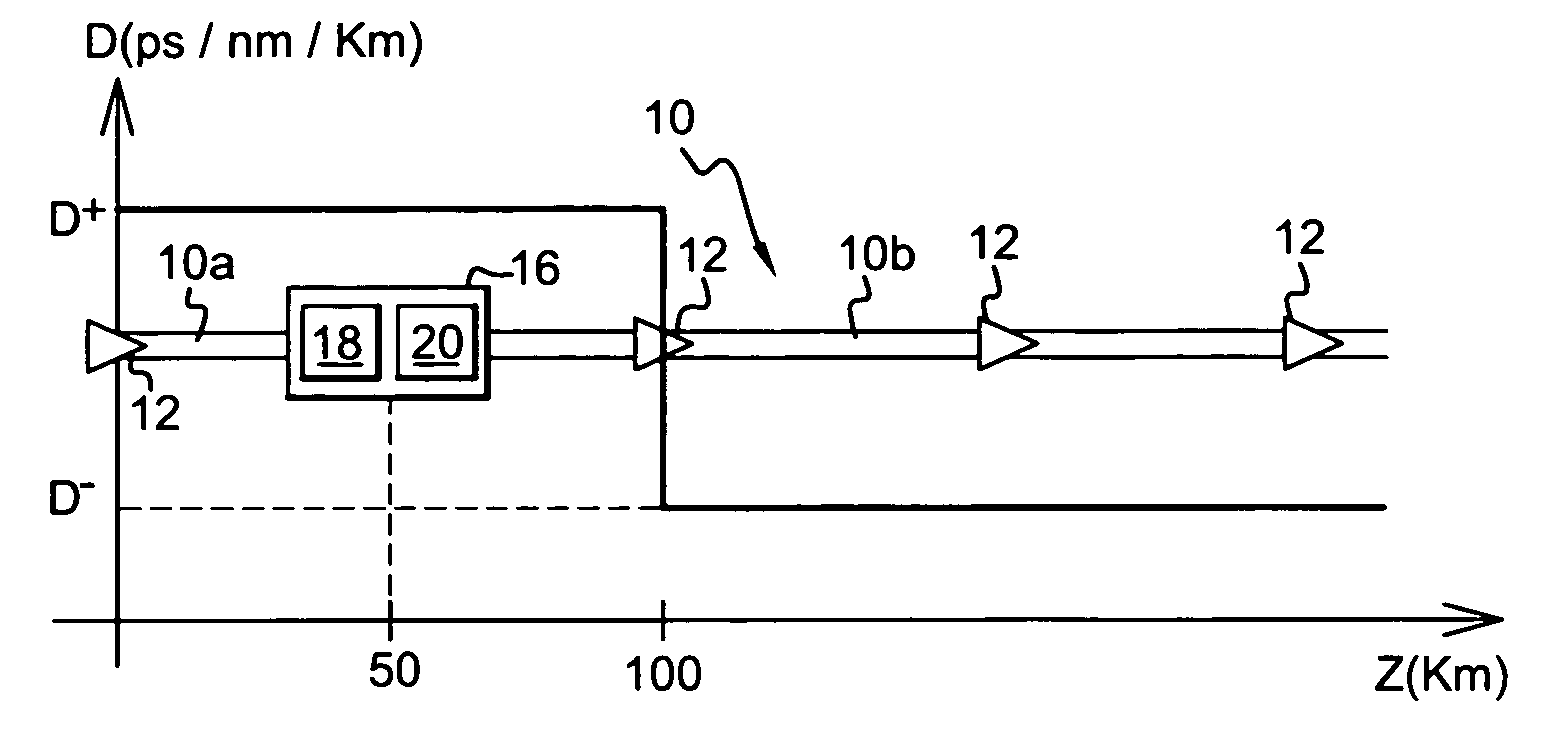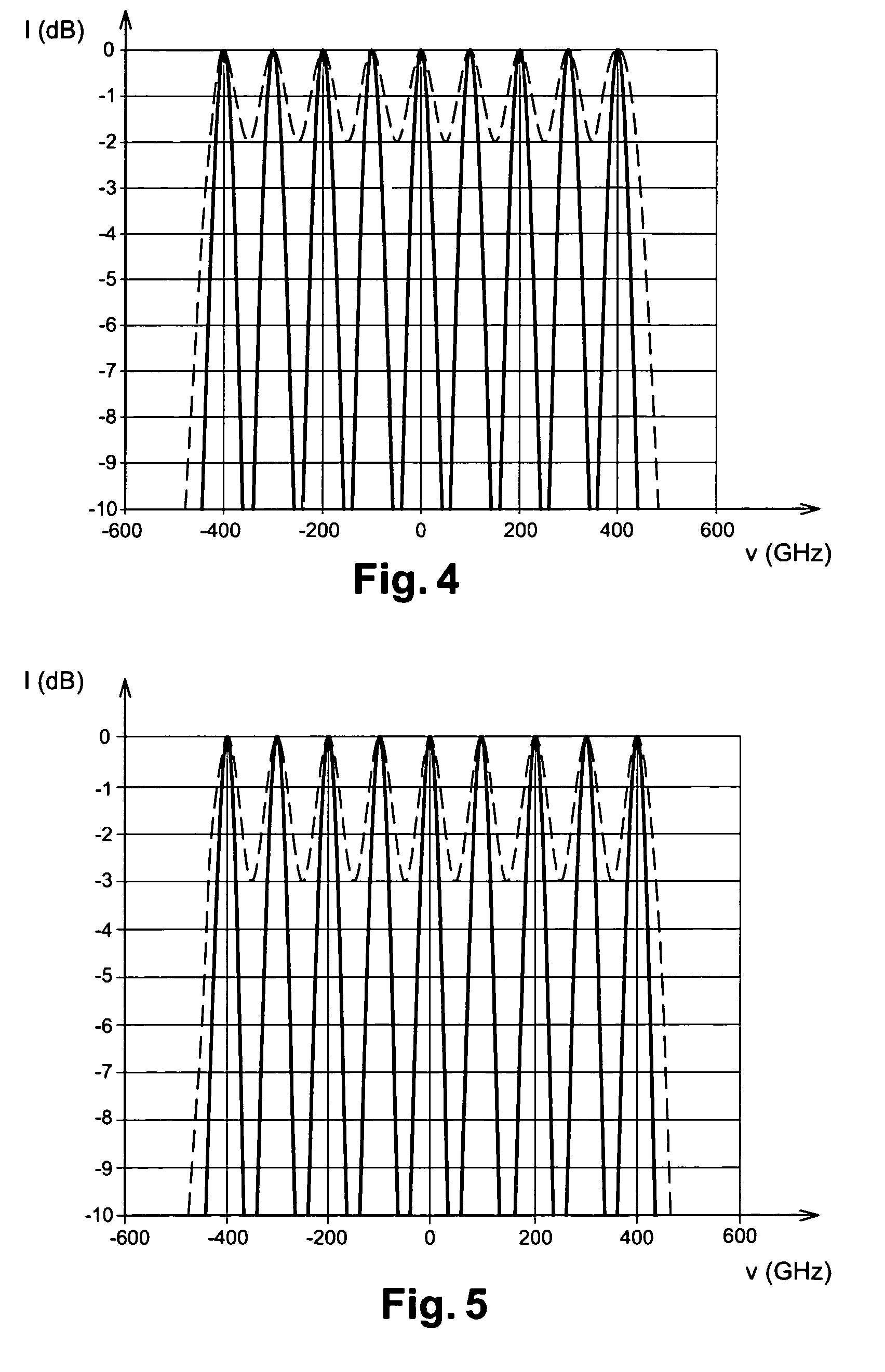Device for optically regenerating pulses, an installation including such a device, and the use of the device
a technology optical fibers, applied in the field of optical regenerating pulses, can solve the problems of destabilizing and disturbing changing the optimum waveform of pulses, and affecting the propagation of such pulses in optical fibers, so as to achieve easy and accurate adjustment, eliminate transmitted pulse noise, and stabilize intensity
- Summary
- Abstract
- Description
- Claims
- Application Information
AI Technical Summary
Benefits of technology
Problems solved by technology
Method used
Image
Examples
Embodiment Construction
[0034]The optical transmission installation shown in FIG. 1 comprises a line fiber 10 forming means for propagating a light signal.
[0035]The light signal in question is made up of a plurality of frequency-multiplexed channels. The multiplexed frequencies are multiples of a frequency f0.
[0036]Each channel is made up of pulses of the DM soliton type. These pulses are used for very high rate optical transmission applications, e.g. for transmitting at 40 gigabits per second (Gbit / s) or higher. The term “bit time” is used to designate the transmission period of the pulses. The half-height time width of DM soliton pulses is generally of the same order as half the bit time.
[0037]The line fiber 10 has a first portion 10a performing the function of propagation means having abnormal dispersion, with a dispersion coefficient D+ that is equal to 2.55 picoseconds per nanometer per kilometer (ps / nm / km), for example. This first portion of fiber 10a having abnormal dispersion is extended by a secon...
PUM
 Login to View More
Login to View More Abstract
Description
Claims
Application Information
 Login to View More
Login to View More - R&D
- Intellectual Property
- Life Sciences
- Materials
- Tech Scout
- Unparalleled Data Quality
- Higher Quality Content
- 60% Fewer Hallucinations
Browse by: Latest US Patents, China's latest patents, Technical Efficacy Thesaurus, Application Domain, Technology Topic, Popular Technical Reports.
© 2025 PatSnap. All rights reserved.Legal|Privacy policy|Modern Slavery Act Transparency Statement|Sitemap|About US| Contact US: help@patsnap.com



